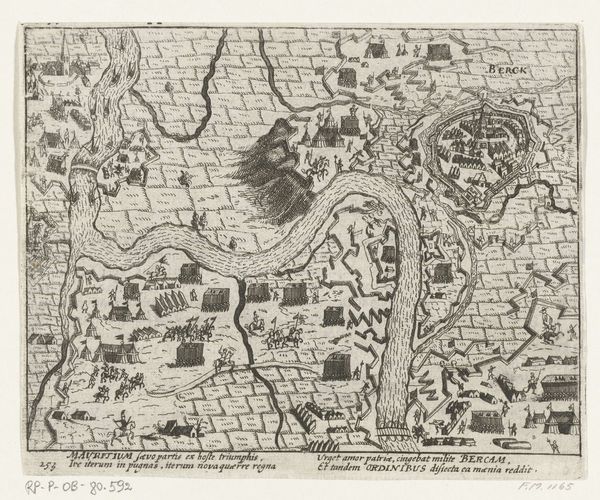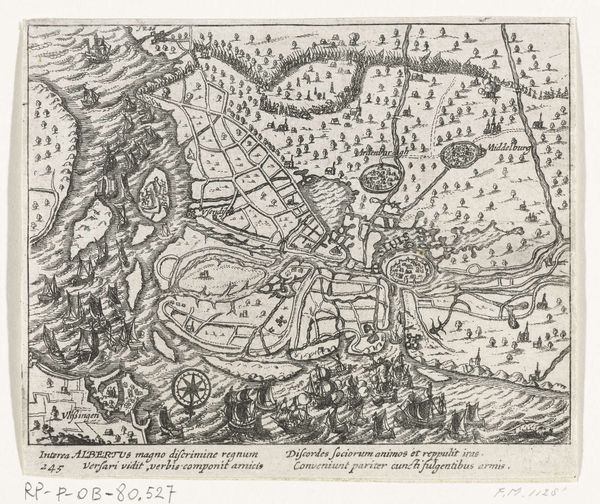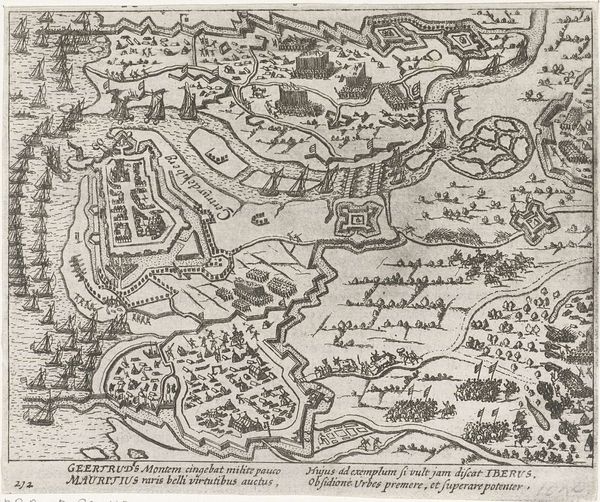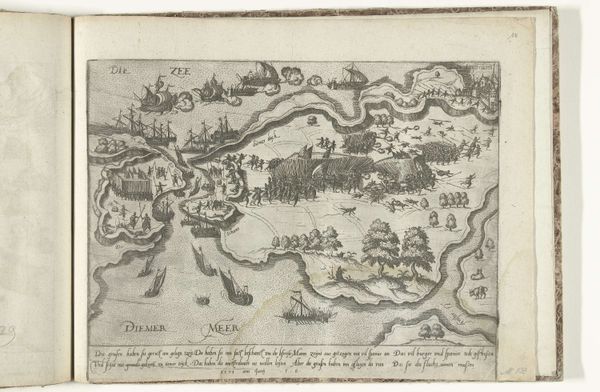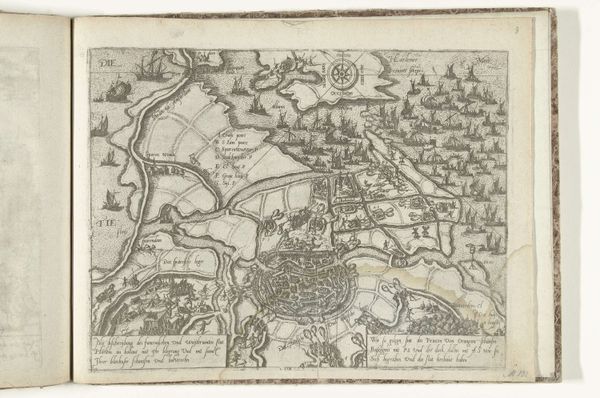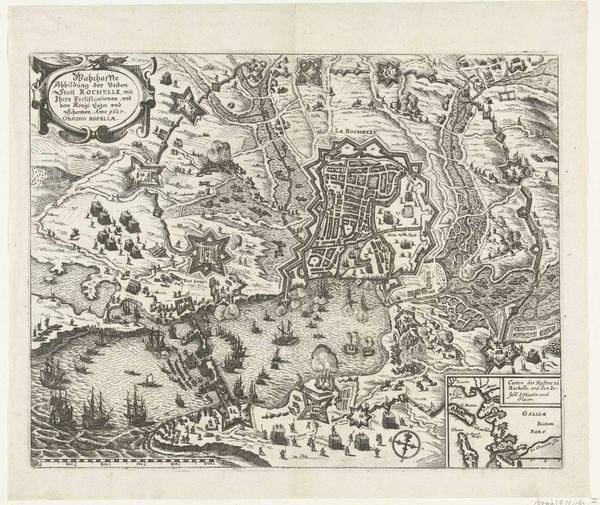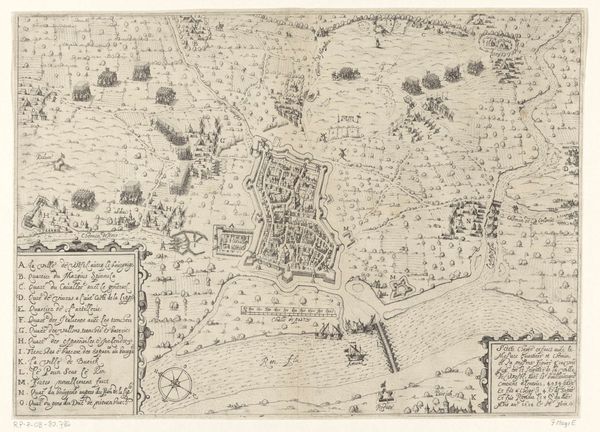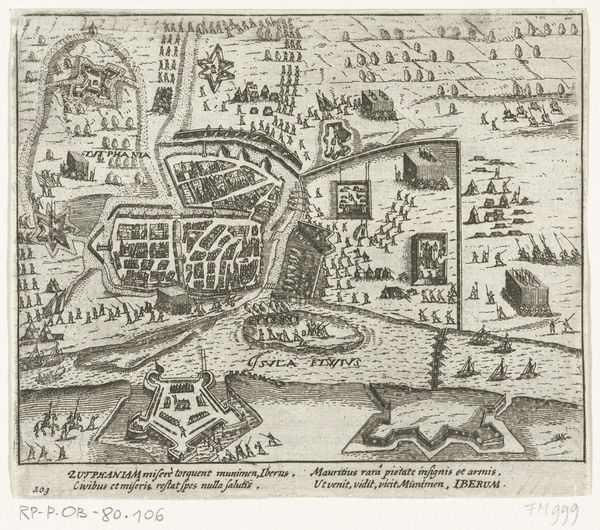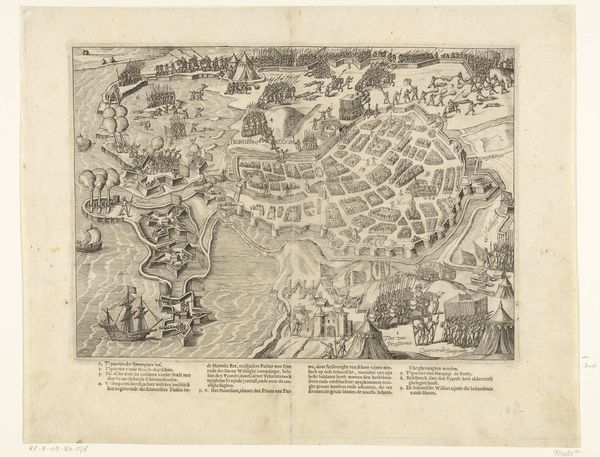
print, ink, engraving
#
medieval
#
dutch-golden-age
# print
#
old engraving style
#
ink line art
#
ink
#
geometric
#
line
#
cityscape
#
history-painting
#
engraving
Dimensions: height 134 mm, width 157 mm
Copyright: Rijks Museum: Open Domain
This anonymous engraving depicts the siege and capture of Grave by Maurice of Nassau in 1602. At first glance, we see a bird's-eye view of the battle, dominated by the rivers and fortified city. The overall composition, with its detailed rendering of military formations, echoes ancient Roman battle maps, where the landscape became a stage for power and conquest. Consider, for instance, the wheel, a symbol repeated in cartography throughout history, and even reappearing in the printing press which made this image possible. It reminds us of the Fortuna wheel, an allegory of instability and unpredictability. Such symbols recur across time, manifesting in Renaissance emblems and even modern advertising. The act of mapping itself is a symbolic gesture, a way of imposing order on chaos, and asserting control over territory. These maps become powerful psychological tools, shaping perceptions and influencing the collective memory of historical events. This image resonates as a testament to human ambition and the enduring quest for dominance, forever etched in our cultural consciousness.
Comments
No comments
Be the first to comment and join the conversation on the ultimate creative platform.
